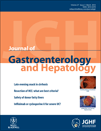Results of repeat endoscopic retrograde cholangiopancreatography after initial biliary cannulation failure following needle-knife sphincterotomy
Conflict of interest: The authors declare no potential conflicts of interest with respect to this manuscript.
Author Contributions
Jaihwan Kim: designed the research, performed the research, analyzed the data, contributed to the preparation, editing, and final approval of the manuscript
Ji Kon Ryu: designed the research, analyzed the data, contributed to the preparation, editing, and final approval of the manuscript
Dong-Won Ahn: performed the research
Joo Kyung Park: performed the research
Won Jae Yoon: performed the research
Yong-Tae Kim: contributed to the preparation, editing, and final approval of the manuscript
Yong Bum Yoon: contributed to the preparation, editing, and final approval of the manuscript
Abstract
Background and Aim: After failed biliary cannulation with needle knife sphincterotomy (NKS), endoscopic retrograde cholangiopancreatography (ERCP) is sometimes repeatedly performed in clinically stable patients; however, there are few reports about the results. This study assessed the results of repeated ERCPs after failure with NKS.
Methods: After failed NKS, patients who underwent repeated ERCP for the same purpose within 3 days were retrospectively identified. Success was defined as deep placement of a catheter into the common bile duct.
Results: Sixty-nine patients underwent a second ERCP procedure and, of those, six underwent a third ERCP. Of the 69 patients, cannulation was successful in 76.8% (53/69): 46 of 58 patients without additional NKS and 7 of 11 with additional NKS. Success increased to 79.7% (55/69) after the results of the third ERCP were included. Common causes of failed NKS were biliary deep cannulation failure (78.3%) and blocking of the endoscopic view due to bleeding (13.0%). There was a significant difference in success rates between the one day (65.7%) and the combined 2–3 day (88.2%) cases (P = 0.027). Except for the interval between ERCPs, there were no other factors associated with success rates. Complications occurred in 8, 11, and one patient after initial, second, and third ERCP and there was no difference of complication rates between each ERCPs.
Conclusions: In cases with biliary cannulation failure with NKS, it is more worthwhile repeating ERCP 2 or 3 days after such failure than one day after, if the patient's condition permits delay of procedure.




